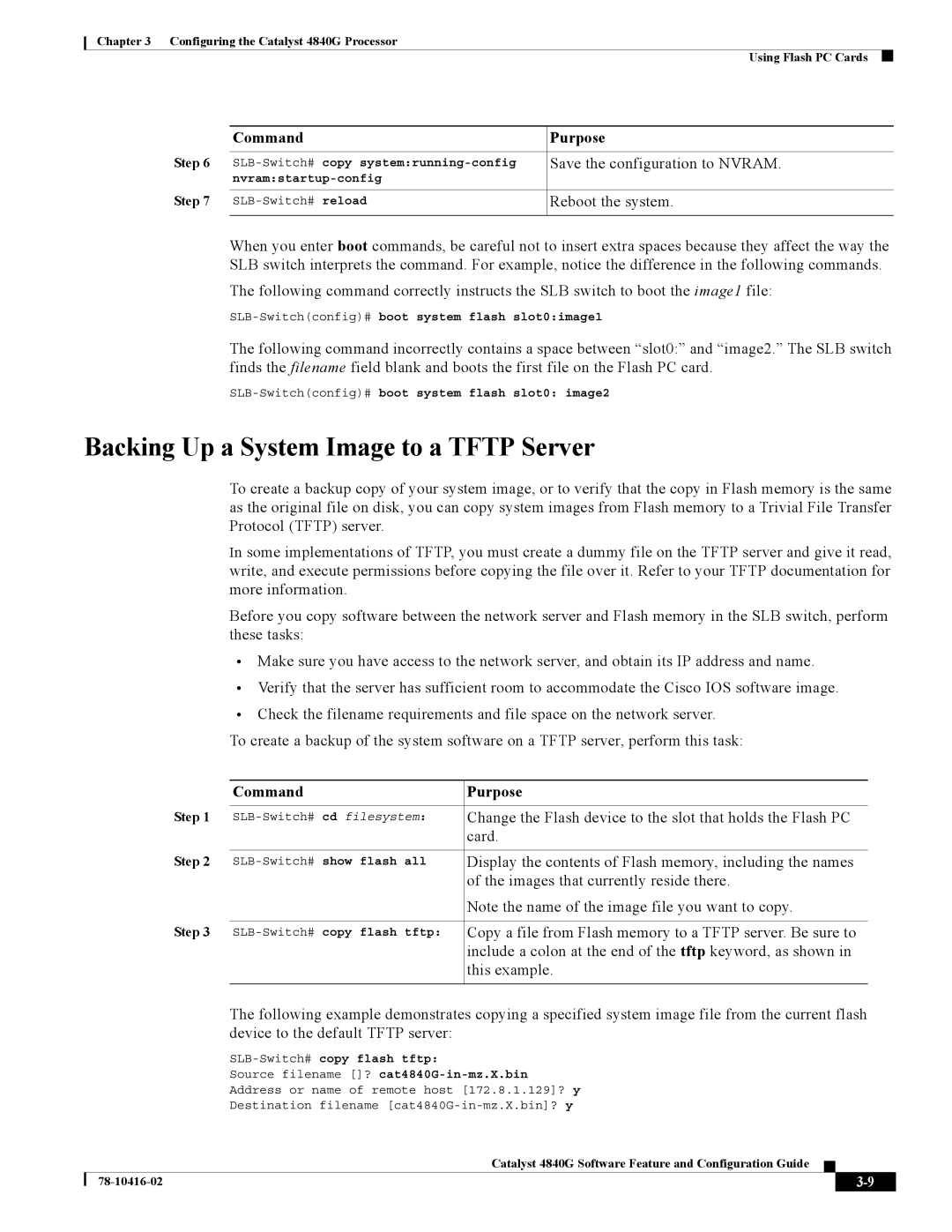
Chapter 3 Configuring the Catalyst 4840G Processor
Using Flash PC Cards
Step 6
Step 7
Command | Purpose |
|
|
Save the configuration to NVRAM. | |
| |
|
|
Reboot the system. | |
|
|
When you enter boot commands, be careful not to insert extra spaces because they affect the way the SLB switch interprets the command. For example, notice the difference in the following commands.
The following command correctly instructs the SLB switch to boot the image1 file:
The following command incorrectly contains a space between “slot0:” and “image2.” The SLB switch finds the filename field blank and boots the first file on the Flash PC card.
Backing Up a System Image to a TFTP Server
To create a backup copy of your system image, or to verify that the copy in Flash memory is the same as the original file on disk, you can copy system images from Flash memory to a Trivial File Transfer Protocol (TFTP) server.
In some implementations of TFTP, you must create a dummy file on the TFTP server and give it read, write, and execute permissions before copying the file over it. Refer to your TFTP documentation for more information.
Before you copy software between the network server and Flash memory in the SLB switch, perform these tasks:
•Make sure you have access to the network server, and obtain its IP address and name.
•Verify that the server has sufficient room to accommodate the Cisco IOS software image.
•Check the filename requirements and file space on the network server.
To create a backup of the system software on a TFTP server, perform this task:
| Command | Purpose |
|
|
|
Step 1 | Change the Flash device to the slot that holds the Flash PC | |
|
| card. |
|
|
|
Step 2 | Display the contents of Flash memory, including the names | |
|
| of the images that currently reside there. |
|
| Note the name of the image file you want to copy. |
|
|
|
Step 3 | Copy a file from Flash memory to a TFTP server. Be sure to | |
|
| include a colon at the end of the tftp keyword, as shown in |
|
| this example. |
|
|
|
The following example demonstrates copying a specified system image file from the current flash device to the default TFTP server:
SLB-Switch# copy flash tftp:
Source filename []?
Address or name of remote host [172.8.1.129]? y
Destination filename
Catalyst 4840G Software Feature and Configuration Guide
|
| ||
|
|
